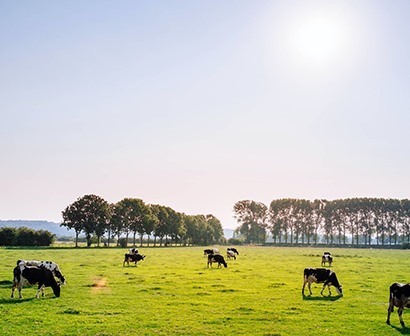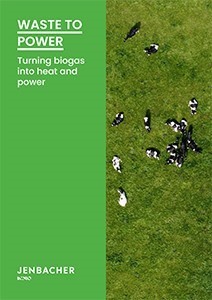
The disposal and treatment of biological waste are a major challenge for the waste industry. Anaerobic fermentation-a superior alternative to composting—provides a unique solution for the management of a wide range of organic substances. Created during anaerobic fermentation, biogas serves as a high-energy, renewable fuel that can be used as a substitute for fossil fuels. Biogas engines not only improve waste management, but also generate an economical energy supply.
The process of biogas generation is divided into three steps:● Preparation of the bio-input
● Fermentation, and
● Post-treatment of the residual material
At the start, the organic material is collected in a primary pit,sterilized to remove harmful germs in case of food waste and moved to the digester. The biogas produced in the digester is collected in a gas storage tank to ensure a continuous supply of gas, independent of fluctuations in the gas production. Finally, the biogas is fed into a gas engine. For safety reasons, the installation of a gas flare is recommended so that excess gas can be burned off in the event of excessive gas production. The end product from the fermentation of the biomass can be utilized as fertilizer. The gas mixture produced in the digester consists of 50 to 70% methane (CH4) and 30 to 50% carbon dioxide (CO2).
This composition makes biogas well suited for combustion in gas engines. The generated electrical energy can be utilized for the treatment plant as well as to supply the public power grid. The thermal energy can be used for heating the digester or to offset the heat requirements of the treatment plant.
-
 Biogas - Brochure
Biogas - Brochure

 The disposal and treatment of biological waste are a major challenge for the waste industry. Anaerobic fermentation-a superior alternative to composting—provides a unique solution for the management of a wide range of organic substances. Created during anaerobic fermentation, biogas serves as a high-energy, renewable fuel that can be used as a substitute for fossil fuels. Biogas engines not only improve waste management, but also generate an economical energy supply.
The disposal and treatment of biological waste are a major challenge for the waste industry. Anaerobic fermentation-a superior alternative to composting—provides a unique solution for the management of a wide range of organic substances. Created during anaerobic fermentation, biogas serves as a high-energy, renewable fuel that can be used as a substitute for fossil fuels. Biogas engines not only improve waste management, but also generate an economical energy supply.